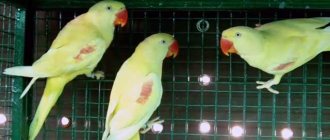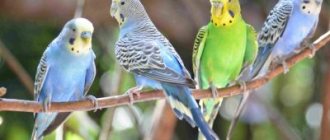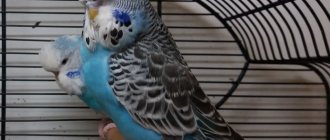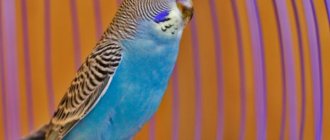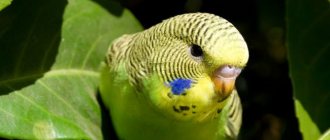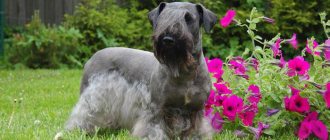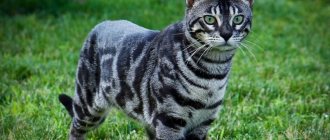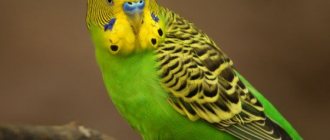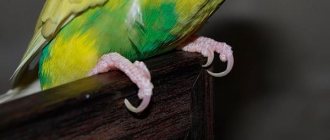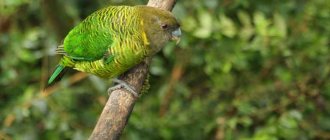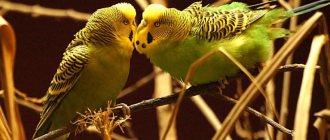- Wild animals
- >>
- Birds
The Gray parrot is a favorite pet bird for many. He has unique abilities that distinguish him from most of his relatives. The modest coloring of the feathers is compensated by the skillful imitation of human speech and the sounds produced by many birds.
Jaco learns more than a hundred words and phrases. However, even the healthiest and happiest pet creates a fair amount of clutter and noise. There are reports that Grays were kept as pets by the ancient Greeks, wealthy Romans, and even King Henry VIII and Portuguese sailors.
Origin of the species and description
Photo: Parrot zhkao
The gray parrot or gray parrot (Psittacus) is a genus of African parrots in the subfamily Psittacinae. It contains two species: the red-tailed parrot (P. erithacus) and the brown-tailed parrot (P. timneh).
Interesting fact: For many years, the two species of gray parrot were classified as subspecies of the same species. However, in 2012, BirdLife International recognized the taxa as distinct species based on genetic, morphological and vocal differences.
Gray parrots are found in primary and secondary tropical forests of West and Central Africa. This is one of the most intelligent bird species in the world. Their tendency to imitate speech and other sounds has made Grays popular as pets. The Gray parrot is important to the Yoruba people of Africa. Its feathers and tail are used to create masks worn during the religious and social festival in Geled.
Video: Gray parrot
The first recorded mention of the African gray parrot by Westerners occurred in 1402, when France occupied the Canary Islands, where the species had been introduced from Africa. As Portugal's trade relations with West Africa developed, more birds were captured and kept as pets. Gray parrot figures appear in paintings by Pieter Rubens in 1629/30, Jan Davids de Him in 1640–50 and Jan Steen 1663–65.
Gray parrot.
It is unlikely that when Stevenson wrote his “Treasure Island”, he thought that descendants would be interested in the breed of the parrot that sat on Silver’s shoulder. However, our contemporaries show genuine interest in the issue, and you can hear different versions, but the most popular opinion is that it is either a macaw or a gray one. In one of the film adaptations of the work, the parrot sitting on the pirate’s shoulder is clearly a gray parrot. If judged impartially, then he should be given first place among the contenders for the role of a pirate companion who desperately needs piastres.
https://www.everystockphoto.com/
These parrots are very sociable, they easily copy various sounds, and if you teach the bird words and phrases related to some situation, then they can quite “deliberately” insert the necessary word according to the circumstances. And such a companion will brighten up life and communication during long pirate wanderings across the seas and oceans. Silver, justifying the not entirely secular vocabulary of his comrade, argued that in a hundred or two years of life you can pick up a lot of things, but in captivity Grays live no more than fifty years, so the captain clearly went too far here. By the way, a trained Gray can become a “teacher” of language for his fellow tribesmen and even for other species of parrots!
https://www.everystockphoto.com/
Let's get to know each other better
In the form of gray parrots, gray parrots are divided into two subspecies - brown-tailed or red-tailed. The name itself contains a description of their colors, although depending on the habitat, deviations in color are possible - plumage with a silvery tint or more or less bright feathers on the back and wings. Sizes may also vary slightly depending on habitat. While not standing out for their particular “parrot-like” brightness and beauty, gray parrots have very high intelligence, which attracts exotic lovers all over the world. And his ability to imitate human speech and various sounds makes him a desirable companion for many.
With a total length of about 35 cm, the weight of the bird is approximately 400 grams, which really allows you to painlessly withstand its “reign” on your shoulder. Royal grays are larger, they have more red coloring in their plumage, but even an ordinary couple may well give birth to a royal. Among grays there are albinos with light beaks and paws, while the bright red tail looks very impressive against the background of white plumage. Representatives of the species may have a completely gray color, not excluding the tail, but there are grays with a white tail. Sometimes the wings and body of the bird are covered with pink feathers, which looks very impressive. In general, as mentioned, the color of this species is not distinguished by defiant luxury.
Character
If you have little time for your future pet, then you shouldn’t get one - Grays are very sensitive to attention from people and are acutely worried about the lack of communication. Jaco simply loves to be the center of attention, and if he is dissatisfied or scared with something, then the scream will be such that, as they say, “at least take out the saints.” This should also be taken into account when thinking about buying a parrot. You need to prepare for the dissatisfied cries of your pet during the period of adaptation to new conditions - then he will be much calmer and more peaceful. Unless, when examined by a veterinarian, you and the doctor will have to listen to all his angry cries.
https://www.everystockphoto.com/
By nature, Grays can also scream quite loudly, but this usually happens in the morning and evening. If your pet has mastered human speech, then you can listen to him muttering mixed with whistling throughout the day - a sort of old man muttering something under his breath. But, unlike many species of its relatives, the Gray Gray is not a loud brawler.
Home keeping Gray
After purchasing a parrot, do not expect to quickly “join the family”: it needs a certain period of getting used to and adapting. This time depends on the nature of the bird, its age, as well as on the patience of the owner and the time that he can allocate to communicate with his ward. The first thing that is required is not to impose your company on the first time after purchasing a Gray. It is better to keep the parrot in a cage, limiting possible contacts with household members and pets.
https://www.everystockphoto.com/
If the bird is young, then it quickly gets used to its owner and its new place of residence. At the same time, the Gray will definitely choose a leader, and it is not at all necessary that the leader will be the one who most wanted to have a parrot: the bird itself will choose a leader. In general, the Gray Gray cannot be classified as a decorative pet that can be given attention from time to time - it always needs communication. Even after letting him out for a walk, he cannot be left unattended, leaving him to his own devices.
Distinguished by their outstanding ability to reproduce various sounds and human speech, Grays begin to speak quite quickly, especially if you devote some time to studying with them. This does not mean that you need to sit for an hour and “drill” some word or phrase into his head - it is enough to study for a few minutes a couple of times a day. The bird learns clearly pronounced words literally on the fly, and if you include associations, then learning will speed up significantly, and your student will insert smart words, by the way, according to the situation.
But you can’t spend days on end communicating with your pet, so the parrot must be taught to play so that it doesn’t get bored when no one is home. You will need toys for your parrot, which will have to be changed from time to time for variety. If the bird does not have enough attention and has nothing to do, it becomes depressed, which can outwardly manifest itself in self-plucking. At the same time, such an active parrot as the African Gray needs peace and quiet - at least ten hours a day.
In the online zoo store Zoo Idea, you can purchase special playgrounds for large parrots. Birds intended for walking and training to a place.
All gray parrots tend to get used to their place, so they perceive any movement as very painful. Even changes that seem insignificant in our opinion cause a negative reaction.
About the cage
The cage should not become a permanent place for the bird; it needs freedom of movement and the ability to communicate with others. It is not recommended to place the cage in drafts or near heating radiators, or near a TV. The lighting should be sufficient, but not bright - this can cause a “nervous breakdown” for your pet. It is better to place the cage so that the parrot feels a “reliable rear” behind its back: move one of the sides of the cage towards the wall to create a so-called calm zone. Your bedroom or kitchen will also not be suitable for housing a new tenant. An important condition will be the installation height of the parrot’s home - when communicating with it, it should be at your eye level, hence calculate the height of the stand for the cage.
In the ZooIdea store you can buy a parrot cage from generally recognized manufacturers - Triol, Ferplast and others. The choice is huge and you can always choose an option that suits you and is comfortable for your pet. The cage needs to be spacious so that the bird can easily spread its wings without touching the walls. The configuration of the parrot’s home is not of interest - the choice is yours, but from experience, a rectangular one is more convenient.
The cage should be selected taking into account the size of the bird, that is, the distance between the bars (diameter 0.3-0.4 cm) should be such that the parrot cannot stick its head through. Grays are distinguished by their intelligence and ability to unravel the secrets of locks and various loose parts, so the cage must be very reliable, and the locks must be external, it is better to lock it with a key, then you are insured against escape. Pay attention to the door - your hand with the bird sitting on it should pass through it freely, and it is better if the door tilts down.
The perch is a separate conversation
Install at least two perches inside the cage, placing them at different heights, but not one under the other (otherwise one of them will be dirty). Metal and plastic perches are not suitable. The former can cause disease on the paws, and the latter can significantly damage health, since the bird will peck at them, and harmful substances will enter your pet’s body.
The best option is wood. When deciding to make a perch yourself, you should adhere to some rules: it is better to look for the source material for them outside the city limits, and not every tree species is suitable. You can stock up on branches of willow, birch, maple, aspen, elderberry, viburnum, beech or ash. Do not use conifers, pear, oak, bird cherry and lilac as raw materials. Poplar is also not suitable - it, like a real vacuum cleaner, absorbs all the toxic substances from the environment.
The perches themselves can become a kind of muscle trainer: if they are of different thicknesses, then the bird, jumping from “branch to branch,” will strengthen its muscles. The perch should be made in such a way that it is comfortable to grasp it. It is better to settle on a conical shape, that is, make the base 3.5 cm, and the other end 2.0 cm, the parrot itself will determine what suits it best. You can leave the bark on the branch - there will be no harm, but each perch must undergo preliminary treatment. Wash thoroughly with soapy water and rinse thoroughly under running water. From time to time the perches require replacement.
“Let’s wash, bathe...”
If you decide to get a Gray parrot, you should know that they are big fans of bathing. And ideally, water procedures should be carried out every 3 days, while the feathers and skin, beak and paws are cleaned. You can set up a shower with a sprayer, install a bath of water in the cage, you can even wash the bird under a weak stream of the shower. Accustoming to such bathing methods should be carried out carefully and gradually so that the bird is not afraid. By the way, one of the methods - combining two in one - is to bathe the parrot in a cage. And the cage is clean, and the ward has taken a shower! To dry feathers, the room temperature should not be less than 200C so that the bird does not get sick.
Lighting
For any bird kept in captivity, an important detail is the best light conditions. During the summer months, there is plenty of natural light (but not too much sun). During the winter months, when lighting and ultraviolet are scarce, you can and should use fluorescent lamps, such as Sun-Glo and Life-Glo and other models.
If all the necessary conditions are met, the bird will be healthy, which is easy to determine by its appearance. The plumage will be full, smooth and clean. The eyes are clean and shiny. The breast is clearly defined and moderately plump. Even breathing and normal stool. If your pet is ruffled, does not respond to external stimuli, and the feathers are stuck together and dirty (around the anus); eyes are dull, without shine; breathes with an open beak and intermittently; the tummy has sunken and there are liquid greenish stools, then you should “sound the alarm.”
It is normal for a gray parrot to have small amounts of dandruff and shedding of fluff. Of course, during the molting period these processes intensify. Now, if the air humidity is less than 40-55%, then dandruff may increase.
About the nutrition of a gray parrot
Having created normal conditions for keeping a parrot, one should not lose sight of such an important issue as nutrition.
The menu should be varied; You can buy ready-made balanced food for parrots in the ZooIdea store. In addition, the diet should contain nuts (almonds are excluded), apricot kernels, watermelon and melon seeds. From grains you can offer rice, buckwheat, wheat, peas, corn, millet. Cereals, except oats, seeds and millet, must be soaked or sprouted. Peas and corn are produced at the stage of milk maturity.
Carrots and potatoes can also be included in the diet. The berries you can give are black currants, rowan berries, blueberries, dogwoods and raspberries. Lettuce, dandelion, spinach are useful - the content of minerals and vitamins makes these plants irreplaceable. If you give branches of fruit or forest trees, you need to treat them with boiling water.
Ideally, there should be three metal bowls.
1.-for water.
2.-for fruits and vegetables.
3.-grain mixture.
With the best feeding, don't forget about multivitamins and minerals. At ZooIdea you can always buy minerals and vitamins for parrots from well-known foreign and domestic manufacturers: Fiory, Vitacraft, Padovan, Triol, Zoomir, Farmavit and others. Ground shell rock, clay, and charcoal are also suitable.
Purified or at least settled water must be present in the drinking bowl at all times. Sometimes you can offer non-carbonated mineral water at room temperature.
Reproduction in captivity
It is better to introduce parrots that have lived separately for a long time in a spacious room - an aviary. Three to four hours after meeting, the birds should be placed in separate cages, and over the next few days they should have “dates” in the enclosure. Only then can you make a couple. If you immediately place both birds in one cage, unmotivated aggression may appear on the part of one of them - this is due to the self-centered nature of the breed.
If it was not possible to reconcile potential partners, then it is better to stop trying and replace one of the parrots. But if you see that a couple feeds together, flies and “combs” the feathers on each other’s head and neck, then the couple has taken place. As a rule, they become interested in the nesting site (size 0.45x0.45x0.5m).
The clutch usually consists of three to four white eggs, with the female laying one egg every three to four days, rarely this interval reaches up to a week. The clutch is incubated for a month, and after the chicks hatch, the head of the family continues to feed and protect the female remaining on the nest. During the breeding season, birds become more aggressive towards both other birds and humans. At this time, you should try to disturb gray parrots as little as possible and it is better to place them separately from others.
The chicks quietly “creak” for the first few days and remain fluffy for another month, only the shafts of the flight feathers appear on the wings. By 2.5 months. The chicks are almost completely feathered. At three months, the chicks show interest in the outside world and fly out of the nest, and the parents continue to care for, feed, and teach the young for some time.
By purchasing a gray parrot, you are acquiring a wonderful companion, creating the conditions for which you will be able to enjoy the company of this bird with high intelligence and difficult character for many years.
Appearance and features
Photo: Talking gray parrot
There are two types:
- Red-tailed Parakeet (P. erithacus): This is a dominant species, larger than the Brown-tailed Parrot, measuring about 33 cm in length. A bird with light gray feathers, an all-black beak and a cherry-red tail. Young birds have darker, duller tails at the end until their first molt, which occurs at 18 months of age. These birds also initially have gray irises, which change color to pale yellow by the time the bird is a year old;
- The brown-tailed parrot (P. timneh) is slightly smaller in size than the red-tailed parrot, but the intelligence and speaking ability remain comparable. They can range from 22 to 28 cm in total length and are considered medium sized parakeets. The browntail has a darker charcoal gray coloration, a darker burgundy tail, and a light horn-like area toward part of the upper jaw. It is endemic to its range.
The brown-tailed gray usually begins to learn to speak earlier than the red-tailed gray, since the period of maturation occurs more quickly. These parrots have a reputation for being less nervous and sensitive than the red-tailed parrot.
Grays can learn to speak within the first year, but many do not say their first word until 12–18 months. Both subspecies appear to have the same ability and tendency to produce human speech, but vocal ability and propensity can vary widely among individual birds. Gray parrots tend to use more specific calls to different species. The most famous gray parrot is Nkisi, who had a vocabulary of over 950 words and was also known for his creative use of language.
Interesting fact: Some ornithologists recognize a third and fourth species, but they are difficult to distinguish in scientific DNA studies.
Description of Jaco
The African gray parrot belongs to the parrot family, a genus of blunt-tailed parrots. It has a fairly large body size of 30 - 35 cm. The wingspan is 65 cm, length is 22 cm. The tail is 8 cm, has a rectangular shape. The beak is black, curved. Quite massive, which allows you to freely deal with rough food. The nostrils, cere and frenulum are leathery. The iris is yellow, the eyes of young chicks are black, and over time acquires a light shade. The edging around the eyes is light ash in color and has no feather cover. The legs are ashen in color and covered with small scales.
The plumage is not thick and visually similar to snake scales. Females are smaller than males, have a dome-shaped head, and a small beak. It is difficult to distinguish the gender. Age after one and a half years is almost impossible to determine visually.
Has the intelligence of a four year old. Copes well with solving intellectual problems.
Can imitate a person's voice. Can master a vocabulary of 1,500 words, speaks well-meaning sentences, and is always happy to engage in dialogue. Loves to play various games with human participation.
We recommend reading: New Zealand kakarik parrot
Where does the gray parrot live?
Photo: Gray parrot
The habitats of African gray parrots cover the forest belt of Central and Western Africa, including the oceanic islands of Principe and Bioko (Gulf of Guinea), where they live in mountain forests at altitudes of up to 1900 m. In West Africa, they are found in coastal countries.
The Gray's habitat includes the following countries:
- Gabon;
- Angola;
- Ghana;
- Cameroon;
- Ivory Coast;
- Congo;
- Sierra Leone;
- Kenya;
- Uganda.
The two known subspecies of African gray parrots have different ranges. Psittacus Erithacus erithicus (Red-tailed Gray) inhabits a range extending from Kenya to the eastern border of Ivory Coast, including island populations. Psittacus Erithacus Timneh (Brown-tailed Gray) has a range from the eastern border of Ivory Coast to Guinea-Bissau.
The habitat of African gray parrots is moist lowland forests, although they are also found at altitudes of up to 2200 m in the eastern part of their range. They are usually observed at forest edges, clearings, gallery forests, mangroves, wooded savannas, crop fields and gardens.
Gray parrots often visit open lands adjacent to forested areas, they live in trees above water and prefer to roost on islands in rivers. They nest in tree hollows, sometimes choosing places left by birds. In West Africa, this species undergoes seasonal movements during the dry season.
What does a gray parrot eat?
Photo: Gray parrot from the Red Book
African gray parrots are herbivorous birds. In the wild, they learn a complex set of skills. The Grays learn how to separate healthy food plants from toxic ones, how to find safe water, and how to reunite with their families when they are separated. They eat mainly a variety of fruits, preferring the oil palm (Elaeis guinensis).
In the wild, Grays can eat the following foods:
- nuts;
- fruits;
- green leaves;
- snails;
- insects;
- succulent shoots;
- seeds;
- grains;
- bark;
- flowers.
Feeding sites, as a rule, are located at a considerable distance and are located on elevated plains. Birds often raid fields with unripe corn, which angers the field owners. They fly from tree to tree, trying to find more ripe fruits and nuts. Grays prefer to climb branches rather than fly.
Interesting Fact: In captivity, the bird can eat bird pellets, a variety of fruits such as pear, orange, pomegranate, apple and banana, and vegetables such as carrots, boiled sweet potatoes, celery, cucumbers, fresh cabbage, peas and green beans. In addition, the Gray needs a source of calcium.
Gray parrots partly feed on the ground, so there are a number of behaviors that birds go through before perching and safely consuming food. Groups of parrots gather around a barren tree until it is completely filled with hundreds of birds preening their feathers, climbing branches, making sounds and communicating. Then the birds descend in waves to the ground. The entire group is never on the ground at the same time. Once on the ground, they are extremely alert, reacting to any movement or sound.
Now you know what a gray parrot eats, let's see how it lives in its natural environment.
Breeding.
Jaco is a rather difficult bird to breed in captivity. A male and a female, placed in the same enclosure, do not always form a pair and begin to nest; the Gray Grays are very picky and capricious in choosing a mate.
To create a pair, ZHAKO breeders place several males and females in one enclosure so that the birds have the opportunity to choose a partner. There are from 2 to 4 chicks in a clutch, incubation lasts 28-30 days. At 3 months of age, the grown and fully feathered chicks leave the nest, remaining under the care of their caring parents for several more weeks. Sexual maturity in Grays occurs at 4-5 years.
Features of character and lifestyle
Photo: Domestic gray parrot
Wild African Gray parrots are very shy and rarely allow people to approach them. They are social birds and nest in large groups. They are often seen in noisy flocks, calling loudly in the mornings, evenings and in flight. The flocks consist only of gray parrots, unlike other parrot species which are found in mixed flocks. During the day, they break up into small groups and fly long distances to forage.
Grays live in trees above water and prefer to spend the night on river islands. Young birds remain in their family groups for long periods of time, up to several years. They socialize with others of their age in nursery trees, but stick to their family pack. Young parrots are looked after by older birds until they are educated and mature enough to live on their own.
Interesting fact: Young Grays exhibit respectful behavior towards older members of the pack. They learn how to behave in different situations, such as competition and defense of nest sites and raising offspring. Competition for nests during the mating season makes the species extremely aggressive.
Birds go to roost at dusk and even in the dark. They travel their way along established routes, carrying out fast and direct flights, often flapping their wings. Previously, roosting flocks were huge, often numbering up to 10,000 parrots. Early in the morning, before sunrise, small flocks leave their roosting area and go screaming to feed.
Keeping Jaco at home
Breeders consider Jaco to be an almost ideal bird. Keeping Jaco at home must be taken seriously. You need to be prepared to accept Jaco with some peculiarities. The parrot has a loud voice, can whistle, click its beak, mutter and make all sorts of sounds. Excessively inquisitive and observant. He chooses his favorite among family members. She tries to show him care in every possible way. He is ready to follow his chosen one everywhere, tries to participate in literally all matters. Sometimes he even sits on an armchair or sofa with his owner to watch TV. Requires a lot of attention and can periodically show jealousy.
Arrangement of the cage
The Jaco parrot is unpretentious, but it must be taken into account that the bird is large. The cages or aviary in which the birds will be kept must be large. The bird is active, quite mobile, loves to frolic so that space does not hinder Jaco’s movement. The bars of the walls are exclusively metal. Put a lock that is difficult for the bird to open. The cage for the Jaco parrot needs to be well equipped and everything must be firmly secured. Place a drinking bowl, several feeders for food and mineral supplements. Add accessories, attach the ladder, perches, wheels, mirror. Provide various food toys for Jaco so that during your absence the pet does not get bored and has fun with the toys.
Every day you should let him out of the cage so that he can fly freely in the home space and be in contact with you more often. The lighting in the room is diffuse. He needs more than 10 hours of rest to sleep and recuperate. If necessary, darken the cage.
Diet
Nutrition should be varied and balanced. The Jaco parrot is completely unpretentious in food and does not require refined and exotic food. Prefers to eat:
- Vegetables and fruits;
- Young branches of fruit trees and shrubs;
- Various nuts, but almonds are contraindicated;
- Properly selected grain mixture and sprouted grain;
- Mineral and vitamin supplements;
- All food must be fresh and of high quality.
Care and hygiene
Jaco loves to splash in the water and wash his feathers. This procedure gives him great pleasure. You can swim 2 times a week. For swimming, you can put a bathhouse or any other container with water. Pamper yourself with a trickle from the shower, but in all cases the water is only warm.
The Jaco parrot's cage should be cleaned when it gets dirty, but at least once a week. Clean food feeders daily. Change the water every day. Wipe and rinse accessories.
Diseases and their prevention
Gray parrots, like all animals, are susceptible to various diseases. The most common threats that contribute to the disease:
- Unsanitary conditions in the cell are due to the development of bacteria. Stagnant water and stale food will lead to various diseases;
- Poor quality and poor nutrition, lack of vitamins and minerals;
- Psychological or physical disorders from lack of attention.
Diseases are divided into three types:
- Non-contagious – obesity, poisoning, feather plucking;
- Infectious – tuberculosis, which is incurable, paratyphoid fever, aspergillosis;
- Parasitic – helminthiasis or fluff eaters.
The listed diseases are visible visually; timely measures and treatment will lead to a quick recovery of the parrot.
We recommend reading: Keeping song parrots at home
Causes of death
Birds often die after advanced forms of the disease or injuries. You may injure yourself on furniture, hit a window glass, or suffer from an electrical discharge. Do not leave a free-flying parrot alone at home.
Important! The Jaco bird suffers without lack of attention, which affects the physical and psychological health of the pet.
Be attentive to the behavior of the parrot; when sick, the mood and behavior immediately changes, appetite disappears, lethargy and irritation appear. This should serve as an alarm.
Social structure and reproduction
Photo: Gray parrot
African Gray parrots are very social birds. Reproduction occurs in free colonies, each pair occupying its own tree. Individuals carefully select their mates and have a lifelong monogamous relationship that begins at sexual maturity, between the ages of three and five. Little is known about courtship in the wild, but observational flights around nests have been observed and recorded.
Interesting fact: Males feed their mate (nuptial feeding) and both produce soft monotonous sounds. During this time, the female will sleep in the nest, and the male will guard it. In captivity, males feed females after copulation, and both sexes engage in a mating dance in which they lower their wings.
The breeding season varies depending on the area, but appears to coincide with the dry season. African gray parrots breed once to twice a year. Females lay three to five round eggs, one at an interval of 2 to 5 days. The females incubate the eggs and feed entirely on the food brought by the male. Incubation takes about thirty days. The chicks leave the nest at the age of twelve weeks.
After the young chicks leave the nest, both parents continue to feed, raise and protect them. They care for their offspring for several years until they become independent. Life expectancy is 40 to 50 years. In captivity, African gray parrots have an average lifespan of 45 years, but can live up to 60 years. In the wild - 22.7 years.
Reason and onomatopoeia JACO.
Grays are deservedly considered the most talented parrots. Jaco has exceptional abilities to copy various sounds and imitate human speech. On average, JACO can remember more than 100 turns of speech. Jaco's talents have made him a popular parrot among bird lovers, who find his appearance very elegant and impressive.
Among parrots, as well as among other animals, between individuals of the same species, some are more, others less, intelligent. One parrot learns quickly and a lot, another slowly and little, while the third never learns anything at all. Here, however, proper training matters a lot. The excellent memory of parrots serves as a great help. They remember what they once memorized for several years. The parrot's significant intelligence is manifested in other cases. He not only distinguishes men from women, friends from enemies, but also understands people in general. We are often surprised by the ability of parrots to recognize people. When raising and training parrots, all this must be taken into account. Like any creature brought up under the influence of another higher being, a parrot requires a certain correctness in training, and with all the affection with it, some severity is also necessary, otherwise it will deteriorate and not improve. Both excessive gentleness in treatment and excessive severity spoil it equally. Single ladies raising parrots often make them completely unpleasant birds because they treat their pets too softly and condescendingly.
The gray parrot is considered one of the favorite indoor birds and deserves it. His meekness, understanding and affection for his master are surprising. It is known in many countries, it is mentioned in every natural history and in general in every book that contains a part devoted to the description of animal life. Levaillant already talks in detail about one gray parrot that lived with an Amsterdam merchant, and glorifies the virtues of this bird. “Charles, that was the name of the parrot, spoke no worse than Cicero, and I could fill a whole volume with the beautiful sayings that I heard from him and which he repeated to me, without missing a single syllable. When ordered, he brought his master's nightcap and shoes and called the maid if she was needed in the room. His favorite place was the store, and here the parrot turned out to be very useful. So, if a stranger entered the shop in the absence of the owner, the parrot screamed until someone came. He had an excellent memory and accurately memorized entire phrases of Dutch sayings. Only in the 60th year of his life in captivity did his memory weaken, and he daily forgot something of what he knew before. From then on, he repeated no more than half of the phrase, even moved syllables and confused the words of one phrase with the words of another.
After Levaillant, many wrote about Grays. “Jaco pays attention to everything that happens around him, knows how to give a certain assessment to everything, gives the correct answers to questions, does everything he is ordered, greets those who come, greets those walking by, only says “good morning” in the morning, and in the evening - “good evening”, asks for food when he is hungry. He calls each family member by name and is more disposed towards some of them than others; if the parrot wants to call, he shouts “come here!” Whether he speaks, sings or whistles, he performs all this as purely as a man.”
In recent decades, serious scientific research has shown that some parrots not only have imitative abilities, but can solve problems that require intelligence. A scientific conference of the US Veterinary Association, held in 1997 in Chicago, confirmed the conclusion of researchers that many parrots have intellectual abilities. Scientists have come to the conclusion that in terms of their abilities, some species of parrots are not inferior to such representatives of the animal world as dolphins and chimpanzees. These amazing birds, experts say, master complex intellectual concepts that even a child under the age of 5 cannot always comprehend.
The most capable of learning to speak are the nursery chicks of ZHAKO - the breeder takes the chick from the nest at the age of up to 2 weeks (until its eyes open), rings it with a permanent ring (with the date of birth) and feeds it by the hour like a child, until 3 - 4 months of age, until the chick begins to eat on its own. The foster chick does not experience discomfort in communicating with a person and perceives him as his parent, as a result, he tries to imitate the person in everything! The reared chick climbs into the hands of itself, and does not show aggression towards humans, eats a variety of food, without a choice, which is given to it by the breeder.
Natural enemies of gray parrots
Photo: Gray parrot
In nature, gray parrots have few enemies. They receive the main damage from humans. Previously, local tribes killed birds for meat. West Africans believed in the magical properties of red feathers, so Grays were also destroyed for their feathers. Later, parrots began to be caught for sale. Grays are secretive, cautious birds, so it is difficult to catch an adult. The Aborigines willingly caught fledgling chicks in the net to generate income.
The gray eagle's enemy is the palm eagle or vulture (Gypohierax angolensis). The diet of this predator mainly consists of oil palm fruits. It is possible that the eagle's aggressive behavior towards the Gray Gray has a competitive significance due to food. You can watch gray parrots scatter in panic in different directions, attacked by an eagle. This was probably the protection of the feeding area by the eagle.
Natural predators for this species include:
- vultures;
- palm eagle;
- monkeys;
- hawks
Adult birds teach their offspring how to defend their territory and how to recognize and avoid predators. By feeding on the ground, African gray parrots are vulnerable to terrestrial predators. Monkeys hunt for eggs and young chicks in the nest. Several species of hawks also prey on chicks and adults. It has been found that gray parrots in captivity are susceptible to fungal infections, bacterial infections, malignant tumors, beak and feather diseases, and can become infected with tapeworms and worms.
Population and species status
Photo: Gray parrot
A recent analysis of Gray Gray populations showed the bird's dismal situation in the wild. Up to 21% of the world's population is captured annually. Unfortunately, there is no law prohibiting the capture and trade of parrots. In addition, the numbers of these birds are affected by habitat destruction, indiscriminate use of pesticides and hunting by local residents. The wild bird trade trap is the main cause of the decline in wild African gray parrot populations.
Interesting fact: Estimates of the total wild gray population at the beginning of the 21st century have varied as high as 13 million, although accurate surveys have been impossible because the parrots live in isolated, often politically unstable regions.
The Gray Gray species is endemic to the primary and secondary tropical forests of West and Central Africa. These parrots depend on large old trees with natural cavities, which are used by the grays for nesting. Studies in Guinea and Guinea-Bissau have shown that the relationship between species status and primary forest condition is proportionate where forests are declining, and so are gray parrot populations.
In addition, the Gray Gray is one of the hyper-traded bird species registered in CITES. In response to continued population declines, overharvest quotas, and unsustainable and illegal trade, CITES included the gray parrot in Phase VI of the CITES Significant Trade Review in 2004. This review led to recommended zero export quotas for some range countries and the decision to develop regional management plans for the species.
Which type of coat should I choose?
In total, there are two “natural” and several artificially bred species of grays. In addition to wild red-tailed and brown-tailed birds, breeders can offer:
- Royal parrots - unlike their “ordinary” relatives, their body is not gray, but bright red with a silver edging. This type of bird is considered the most expensive.
- Albinos are found in the wild; breeders support the albinism gene by crossing males and females that have this phenotypic trait.
- All-gray Grays are also an artificially bred breed.
The difference between parrots is purely aesthetic. In addition, ornithological specialists do not always approve of human intervention in nature and the breeding of artificial species. Although Grays are practically a domesticated species of parrot, the closer the genotype is to the natural one, the healthier the individual. Therefore, if the future owner is not a professional bird breeder and does not pursue the goal of breeding any special phenotypic characteristics, then it is best to opt for the most common one - a red-tailed or brown-tailed chick.
